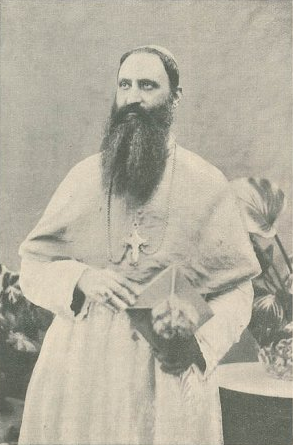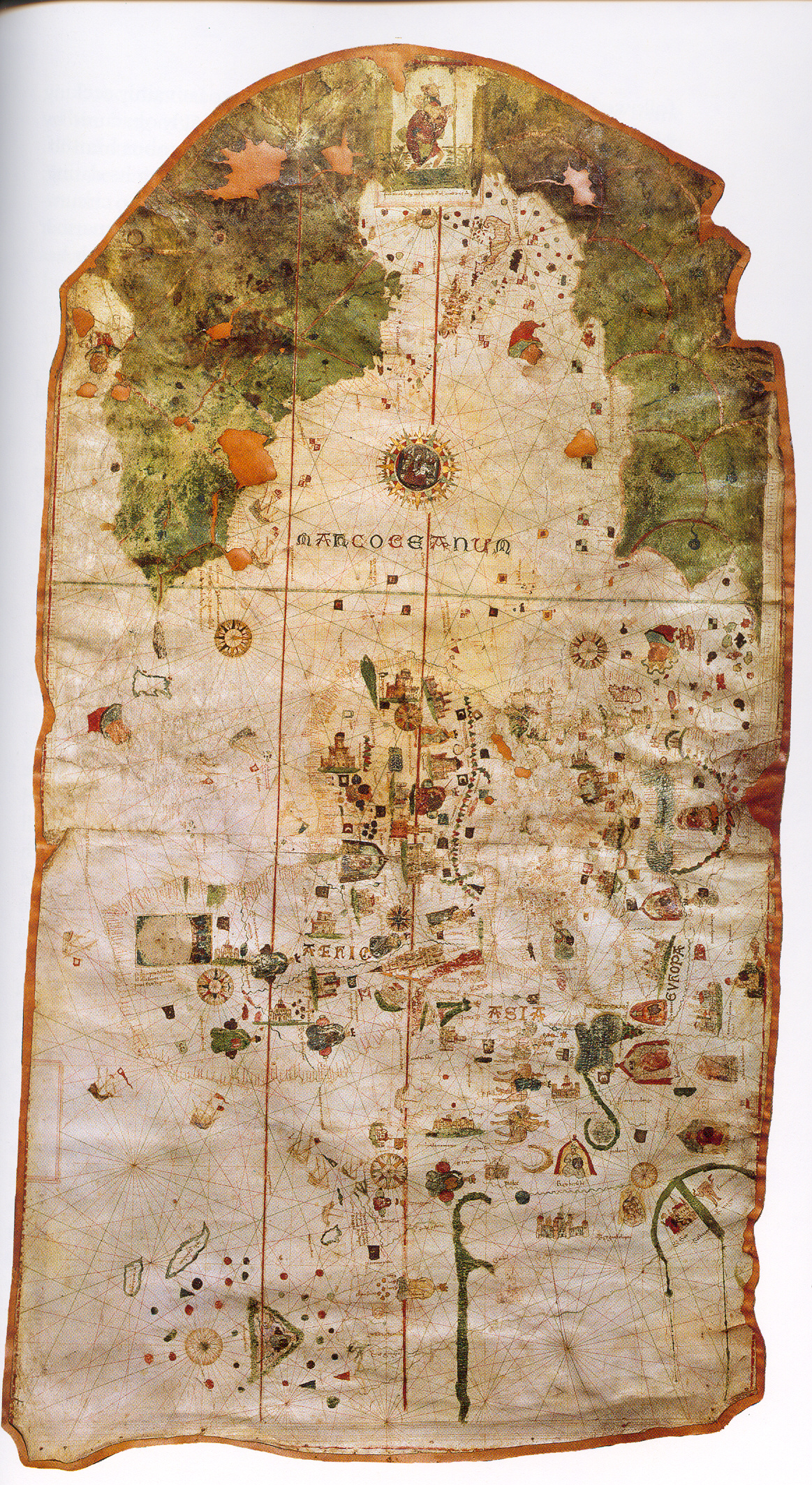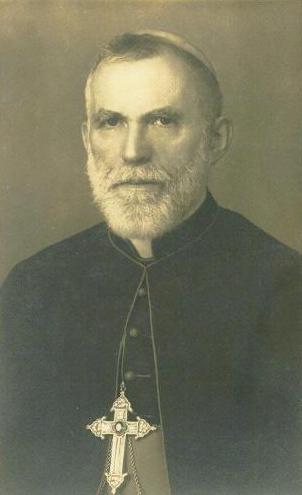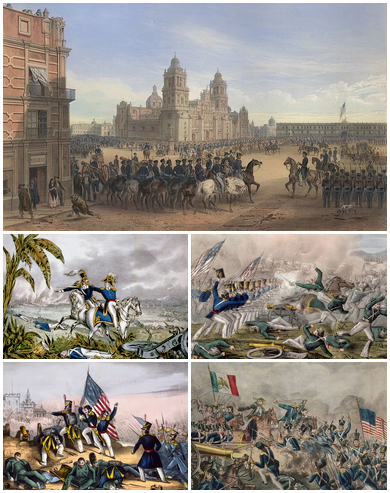|
António Sebastião Valente
Dom Sebastião António Valente (20 January 1846http://www.catholic-hierarchy.org/bishop/bvalente.html , Google cache of catholic-hierarchy.org page, accessed on August 9, 2015 - 25 January 1908) was a Catholic archbishop and Portuguese colonial administrator, the first Patriarch of the East Indies. Biography Born in El Puerto de Santa María El Puerto de Santa María (), locally known as El Puerto and historically in English as Port Saint Mary, is a Municipalities in Spain, municipality of Spain located on the banks of the Guadalete River in the province of Cádiz, Andalusia. , the c ..., province of Cadiz (Spain), he was the son of Maria João Valente and Bridget Medeiros, a native of Mértola, Portugal. He attended primary school in Beja, graduated in Coimbra and taught in the Seminaries of Viseu and Santarém. He was ordained a deacon on 23 September 1871, and on 25 May 1872 ordained a priest. Consecrated Archbishop His consecration as the Archbishop of Goa and the ... [...More Info...] [...Related Items...] OR: [Wikipedia] [Google] [Baidu] |
Archbishop Of Goa
The Roman Catholic Metropolitan Archdiocese of Goa and Daman (, , ) encompasses the Goa state and the Damaon territory in the Konkan region, by the west coast of India. The ecclesiastical province of Goa and Damaon includes a suffragan diocese, the Sindhudurg Diocese that comprises the Malvani areas of (central Konkan). The Archbishop of Goa also holds the titles of Primate of the East and Patriarch of the East Indies. The beginnings lie in the '' Padroado'' system of Portuguese Goa and Damaon, in the early 1900s the primatial see was transferred back to the Sacred Congregation for the Evangelisation of Peoples, as the ''Padroado'' system of the Indo-Portuguese era was being dismantled. It is the oldest bishopric of the Latin Rite of worship in terms of activity in the East Indies, with its origins linked to the Portuguese discoveries, and their subsequent arrival at the St Mary's islands and Calicut, on the coast of the Malabar region. The current Metropolitan Arc ... [...More Info...] [...Related Items...] OR: [Wikipedia] [Google] [Baidu] |
Patriarch Of The East Indies
The Titular Patriarch of the East Indies (; for Titular Patriarchate of the East Indies) in the Catholic hierarchy is the title of the Archbishop of Goa and Daman in India; another of his titles is the Primate of the East. Unlike the patriarchs and the major archbishops of the Eastern Catholic Churches '' sui juris'', the Patriarch of the East Indies is within the Latin Church similar to the residential Latin Patriarchs of Venice, Lisbon and Jerusalem, enjoying only an honorary position. Like the Patriarch of the West Indies, the Patriarch of the East Indies is a titular patriarchate unlike the residential Latin Catholic Patriarchs. The title is attached to the Archbishop of Goa and Daman, the diocesan ordinary of the Archdiocese of Goa and Daman and the metropolitan archbishop of the Province of Goa and Daman. This title of Patriarch or Primate of the East Indies was conferred upon the Archbishop of Goa as a result of a concordat between the Holy See and the Crown of P ... [...More Info...] [...Related Items...] OR: [Wikipedia] [Google] [Baidu] |
El Puerto De Santa María
El Puerto de Santa María (), locally known as El Puerto and historically in English as Port Saint Mary, is a Municipalities in Spain, municipality of Spain located on the banks of the Guadalete River in the province of Cádiz, Andalusia. , the city has a population of c. 88,184, of which some 50,000 live in the urban center, and the remainder in the surrounding areas. The town of El Puerto de Santa María is located northeast of Cádiz, across the bay of Cádiz. History According to the legend told in the Odyssey of Homer, after the Trojan War-era, Greek official named Menestheus escaped with his troops through the Straits of Gibraltar and reached the Guadalete River. They established themselves here and called that port 'Menestheus's port' or 'Menesthei Portus' (), after the oracle of Menestheus (), to whom, also, the inhabitants of Cádiz, Gades offered sacrifices. In 711, Amazighs (Berbers) (Moors) from the North of Africa (Morocco) conquered southern Spain. They renamed t ... [...More Info...] [...Related Items...] OR: [Wikipedia] [Google] [Baidu] |
History Of Spain (1808–1874)
Spain in the 19th century was a country in turmoil. Occupied by Napoleon from 1808 to 1814, a massively destructive "liberation war" ensued. Following the Spanish Constitution of 1812, Spain was divided between the constitution's liberal principles and the absolutism personified by the rule of Ferdinand VII, who repealed the 1812 Constitution for the first time in 1814, only to be forced to swear over the constitution again in 1820 after a liberal ''pronunciamiento'', giving way to the brief Trienio Liberal (1820–1823). This brief period came to an abrupt end with Ferdinand again abolishing the 1812 constitution and the start of the Ominous Decade of absolutist rule for the last ten years of his reign. Economic transformations throughout the century included the privatisation of communal municipal lands—not interrupted but actually intensified and legitimised during the Fernandine absolutist restorations —as well as the confiscation of Church properties. The early centu ... [...More Info...] [...Related Items...] OR: [Wikipedia] [Google] [Baidu] |
Goa Velha
Goa Velha is a small town in ''Ilhas de Goa'' subdistrict, Goa state, India. It should not be confused with the World Heritage Site of the historical city of Old Goa (). St Andrew's Church is its parish church. It is well known for its yearly 'Procession of the Saints' (Konkani: ''Santanchem Pursanv'') History The town of Goa Velha was a southern suburb of the City of Goa, which was the original capital of Portuguese India. The Plagues of Goa in the 16th and 18th century gradually brought about the decline in the city's population. Goa Velha was one of the few areas on the Ilhas de Goa where populations of people began to cluster around. Velha Goa was once as vibrant as London or Lisbon with a population of more than 200,000. Then a disaster struck, and over the course of the next two centuries, the magnificent city was reduced to a shadow of its past. In the 15th century, the Bijapur Sultanate built Velha Goa on the banks of Mandovi river. But once the Portuguese defeated ... [...More Info...] [...Related Items...] OR: [Wikipedia] [Google] [Baidu] |
Portuguese India
The State of India, also known as the Portuguese State of India or Portuguese India, was a state of the Portuguese Empire founded seven years after the discovery of the sea route to the Indian subcontinent by Vasco da Gama, a subject of the Kingdom of Portugal. The capital of Portuguese India served as the governing centre of a string of military forts and maritime ports scattered along the coasts of the Indian Ocean. The first viceroy Francisco de Almeida established his base of operations at Fort Manuel in the Malabar region, after the Kingdom of Cochin negotiated to become a protectorate of Portugal in 1505. With the Portuguese conquest of Goa from the Bijapur Sultanate in 1510, Goa became the major anchorage for the Armadas arriving in India. The capital of the viceroyalty was transferred from Cochin to Goa in 1530. From 1535, Mumbai (Bombay) was a harbour of Portuguese India, known as '' Bom Bahia'', until it was handed over, through the Marriage Treaty, dowry o ... [...More Info...] [...Related Items...] OR: [Wikipedia] [Google] [Baidu] |
Roman Catholic
The Catholic Church (), also known as the Roman Catholic Church, is the largest Christian church, with 1.27 to 1.41 billion baptized Catholics worldwide as of 2025. It is among the world's oldest and largest international institutions and has played a prominent role in the history and development of Western civilization. O'Collins, p. v (preface). The church consists of 24 ''sui iuris'' (autonomous) churches, including the Latin Church and 23 Eastern Catholic Churches, which comprise almost 3,500 dioceses and eparchies around the world, each overseen by one or more bishops. The pope, who is the bishop of Rome, is the chief pastor of the church. The core beliefs of Catholicism are found in the Nicene Creed. The Catholic Church teaches that it is the one, holy, catholic and apostolic church founded by Jesus Christ in his Great Commission, that its bishops are the successors of Christ's apostles, and that the pope is the successor of Saint Peter, upo ... [...More Info...] [...Related Items...] OR: [Wikipedia] [Google] [Baidu] |
Patriarchate Of The East Indies
The Titular Patriarch of the East Indies (; for Titular Patriarchate of the East Indies) in the Catholic hierarchy is the title of the Archbishop of Goa and Daman in India; another of his titles is the Primate of the East. Unlike the patriarchs and the major archbishops of the Eastern Catholic Churches '' sui juris'', the Patriarch of the East Indies is within the Latin Church similar to the residential Latin Patriarchs of Venice, Lisbon and Jerusalem, enjoying only an honorary position. Like the Patriarch of the West Indies, the Patriarch of the East Indies is a titular patriarchate unlike the residential Latin Catholic Patriarchs. The title is attached to the Archbishop of Goa and Daman, the diocesan ordinary of the Archdiocese of Goa and Daman and the metropolitan archbishop of the Province of Goa and Daman. This title of Patriarch or Primate of the East Indies was conferred upon the Archbishop of Goa as a result of a concordat between the ... between the Holy See and t ... [...More Info...] [...Related Items...] OR: [Wikipedia] [Google] [Baidu] |
Governors-general Of Portuguese India
Governor-general (plural governors-general), or governor general (plural governors general), is the title of an official, most prominently associated with the British Empire. In the context of the governors-general and former British colonies, governors-general continue to be appointed as viceroy to represent the monarch of a personal union in any sovereign state over which the monarch does not normally reign in person (non-UK Commonwealth realm). In the British Empire, governors-general were appointed on the advice of the government of the United Kingdom and were often British aristocracy, but in the mid-twentieth century they began to be appointed on the advice of the independent government of each realm and be citizens of each independent state. Governors-general have also previously been appointed in respect of major colonial states or other territories held by either a monarchy or republic, such as Japan, Korea, Taiwan and France in Indochina. Current uses In modern usa ... [...More Info...] [...Related Items...] OR: [Wikipedia] [Google] [Baidu] |
Portuguese People Of Spanish Descent
Portuguese may refer to: * anything of, from, or related to the country and nation of Portugal ** Portuguese cuisine, traditional foods ** Portuguese language, a Romance language *** Portuguese dialects, variants of the Portuguese language ** Portuguese man o' war, a dangerous marine animal ** Portuguese people, an ethnic group See also * * ''Sonnets from the Portuguese'' * "A Portuguesa", the national anthem of Portugal * Lusofonia * Lusitania Lusitania (; ) was an ancient Iberian Roman province encompassing most of modern-day Portugal (south of the Douro River) and a large portion of western Spain (the present Extremadura and Province of Salamanca). Romans named the region after th ... * {{disambiguation Language and nationality disambiguation pages ... [...More Info...] [...Related Items...] OR: [Wikipedia] [Google] [Baidu] |
1908 Deaths
This is the longest year in either the Julian or Gregorian calendars, having a duration of 31622401.38 seconds of Terrestrial Time (or ephemeris time), measured according to the definition of mean solar time. Events January * January 1 – The British Nimrod Expedition, ''Nimrod'' Expedition led by Ernest Shackleton sets sail from New Zealand on the ''Nimrod (1867 ship), Nimrod'' for Antarctica. * January 3 – A Solar eclipse of January 3, 1908, total solar eclipse is visible in the Pacific Ocean and is the 46th solar eclipse of Solar Saros 130. * January 13 – A fire breaks out at the Rhoads Opera House fire, Rhoads Opera House in Boyertown, Pennsylvania, killing 171 people. * January 15 – Alpha Kappa Alpha, the first race inclusive sorority is founded on the campus of Howard University in Washington, D.C. * January 24 – Robert Baden-Powell's ''Scouting for Boys'' begins publication in London. The book eventually sells over 100 million copies, and effectively be ... [...More Info...] [...Related Items...] OR: [Wikipedia] [Google] [Baidu] |
1846 Births
Events January–March * January 5 – The United States House of Representatives votes to stop sharing the Oregon Country with the United Kingdom. * January 13 – The Milan–Venice railway's bridge, over the Venetian Lagoon between Mestre and Venice in Italy, opens, the world's longest since 1151. * January 23 – Ahmad I ibn Mustafa, Bey of Tunis, declares the legal abolition of slavery in Tunisia. * February 4 – Led by Brigham Young, many Mormons in the U.S. begin their migration west from Nauvoo, Illinois, to the Great Salt Lake in what becomes Utah. * February 10 – First Anglo-Sikh war: Battle of Sobraon – British forces in India defeat the Sikhs. * February 18 – The Galician Peasant Uprising of 1846 begins in Austria. * February 19 – Texas annexation: United States president James K. Polk's annexation of the Republic of Texas is finalized by Texas president Anson Jones in a formal ceremony of transfer of sovereignty. The newly formed ... [...More Info...] [...Related Items...] OR: [Wikipedia] [Google] [Baidu] |





